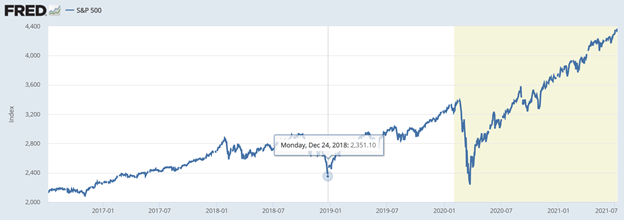[ad_1]
By: Shane Neagle
When most people think of Bitcoin or other digital assets, one word comes to mind: Volatility. While high-frequency traders thrive on volatility, it’s certainly not something one would associate with blue-chip stocks. Yet, as an emerging market holding $56.5 billion in assets, some DeFi projects have the potential to eventually become something of a blue-chip stock, despite their volatility today.
The DeFi space is best understood when it is contrasted with the stock market. The latter is highly regulated and influenced by monetary policies, coming primarily from the Federal Reserve. On the other hand, DeFi projects are free to explore what is possible as if a central committee doesn’t exist. Because of their reliance on merit and financial innovation, DeFi protocols can be viewed as pioneers, claiming new lands that are currently cheap but could become future Manhattan.
First, let’s see what it means for DeFi to not rely on federal monetary policies. When we take a look at the S&P 500 blue-chip index, it is easy to see why the benefits of blue-chip stocks would be the preferred route by many traders and investors. After all, they provide stability for your portfolio and tend to generate reliable long-term returns.
Image credit: fred.stlouisfed.org, source: S&P Dow Jones Indices LLC
As you can see in the chart above, the S&P 500 has increased over 62% throughout the last three years. However, this growth had been temporarily nullified two times: in March 2020 due to emerging Covid-19 fears and in December 2018. The latter dip is more telling because the Fed’s interest rate hike was one of the major factors involved. Seeing the negative effect on the stock market, the Fed soon corrected course, gradually dropping the interest rate from 2.4% during 2019 to the current range of 0 – 0.25%.
Image credit: fred.stlouisfed.org, source: Board of Governors of the Federal Reserve System (US)
Suffice to say, this dynamic between the Fed and the stock market infers heavy support. Otherwise, we wouldn’t have seen a stock market reversal from March's Black Monday. For the first time in monetary history, the Fed successfully intervened in the market by creating Primary and Secondary Market Corporate Credit Facilities and buying $750 billion in corporate bonds. Consequently, the S&P 500 — along with the majority of the market — was quickly back on course.
Unfortunately, alongside the unprecedented increase in money supply and supply chain disruptions caused by economic lockdowns, we are seeing an increasing inflation rate as a consequence. June’s consumer price index rose to 5.4%, the largest monthly gain since as far back as August of 2018.
Therefore, with inflation continuing to increase and interest rates remaining low, this leaves the economy in a precarious position with many uncertainties. Never before have so many unprecedented monetary events occurred in such a short time span.
When it …
Full story available on Benzinga.com
[ad_2]
Source link





